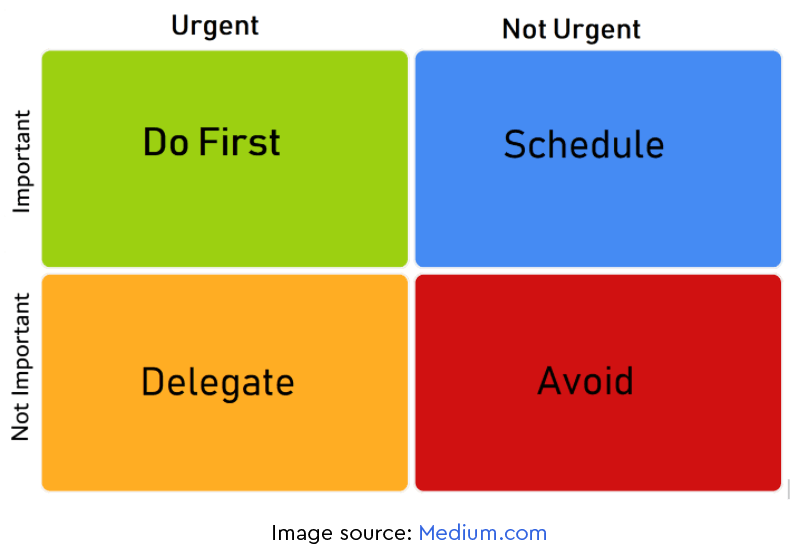“Why do you go away? So that you can come back. So that you can see the place you came from with new eyes and extra colors. And the people there see you differently, too. Coming back to where you started is not the same as never leaving.” ~ Terry Pratchett, A Hat Full of Sky
Have you ever had the experience of taking an exotic trip, then coming home and everything in your everyday life looked so much different? Sometimes it feels disappointing to come back to the same old, but other times it makes you appreciate your life even more.
A secondment serves a similar purpose. It’s a bit like taking a working holiday from your regular place of work, in order to develop your skills and build bridges with a new group of people.
Although it’s mostly a good thing, a secondment does pose some challenges. Let’s look into some examples of secondments and their advantages and disadvantages.

The Basics of Secondments
First, let’s cover the who, what, how and why of secondments.
-
What is a Secondment?
A secondment is when a professional steps out of his or her regular job, and works in another setting for a period of time. The aim is to broaden connections, serve a need, or gain experience.
There are various types of secondments. Some take place within the same organization. Working in different departments helps to expand a skill set, deepen connections, and increase an individual’s visibility within the workplace.
At other times, someone with a particular expertise is recruited by another organization, usually for a short period of time. It’s sort of like contract work, in this sense.
And a final type of secondment is where someone works for a company client, or an organization they interact with on a regular basis. This serves to tighten the connection, and creates more fluidity in the business relationship.
-
How Long Do Secondments Last?
Secondments can be either full time or part time, and they last from a couple of weeks to a couple of years.
-
Who Takes Secondments?
Secondments oftentimes are about leveling up a career. Usually someone who’s five to ten years into a career, and looking to broaden their experience and build social capital seeks out a secondment.
-
What is the Purpose of a Secondment?
A primary purpose of the secondment is developing soft skills. While an individual may already be highly skilled in his or her particular field, the secondment provides the opportunity to build rapport with a wider community. By mixing and mingling with others, they learn how to persuade, communicate and negotiate.
The secondment also allows an employee to use the same skills in a different context. By creating this depth, they return to their regular job more well-rounded and proficient.
From an organization’s point of view, a secondment is about developing an employee base that is well-versed in all areas of the company, and so suited for promotion and leadership positions. It’s closely linked to talent and succession planning.
Secondments also increase fluidity between companies who do business together. Having a personal connection to a vendor or client increases trust and relatability. It also creates familiarity with the other organization’s processes and protocol, which helps to ease administrative backlog.
As you can see, a secondment serves both the individual and the organization. It tightens bonds between organizations, and strengthens an employee’s skill set.

Examples of Secondments
Secondments look a little different depending on their objective. Let’s look at a few examples.
-
Inter-Company Secondment
In a large company, it’s easy for departments to behave like individual fiefdoms, working in isolation from one another. Secondments help to bridge these communication gaps. Employees understand the goings-on in various parts of the company, and how everything fits together.
For example, someone working in human resources might spend a year working within three or four different departments, assisting with projects and daily tasks. This experience gives them on-hands knowledge of each department, and the responsibilities of various roles. After returning to their regular job, this knowledge helps with onboarding and recruitment efforts.
-
Expertise Recruitment
Sometimes, particularly during a time of crisis or conflict, a government agency may require expertise it doesn’t have on hand, such as a statistician or scientist. In these instances, they may go to the local university and tap a professor on the shoulders to see if he or she might lend a hand for a while.
Or, when two large companies merge, oftentimes they are deluged with legal and administrative work. Rather than hire someone from a separate organization, it makes more sense to bring the expert into the company, and allow them to assist with the work overload.
-
Vendor or Client Secondment
When two companies work closely together, they often find secondments to be mutually beneficial. It develops a tight bond between the two organizations. They have a first-hand understanding of the client’s needs and preferences. These secondments may be planned, or else they come about organically when a position opens up. They may be open-ended, lasting for several years.
In sum, secondments look a bit different depending on the scenario. Usually, it’s about developing an individual’s skill set. At other times, however, it’s more about filling a critical need within an organization for a period of time.

Advantages of Secondments
Usually, someone participating in a secondment is thrown into a completely new environment. It’s a real adventure, in this sense. They probably have strong skills, but need to start flexing new ones right away. It demands alacrity, and an eagerness to learn.
The secondment provides clear advantages to everyone involved. Let’s go over some of these, starting with the employee and then moving on to the organization.
Benefits to the Employee
-
Empathize With Coworkers
When you do a secondment within your own organization, you’re able to see what goes on in other departments, and what your coworkers do on a daily basis. You understand the struggles and challenges of their role, and it creates understanding.
-
Develop Business Acumen
It’s easy to get pigeonholed into your position and department. A secondment broadens your perspective, and you see the organization as a whole. It’s easier to understand what drives revenue within the company, and which operations are critical to the organization’s success.
-
Understand Your Weaknesses
In career planning, knowing what you can’t do is just as important as knowing where you excel. A secondment allows you to dip your hand into a variety of settings for a short time, and experiment with various projects and group dynamics. This quick sampling gives a strong indication of areas you’d just as soon not grow into.
-
Meet Great People
A secondment is a real social adventure. You double your work contacts, and get to know a lot of people personally and professionally. You’ll have twice the Christmas parties to go to, and multiple appointments for after-hours drinks.
-
Experience Different Company Cultures
Every organization has its own unwritten rules around teamwork, appreciation, and leadership, and operates from a different set of core values. A secondment allows you to experience another company culture, first-hand. It’s a bit like going into another country, in this sense, and watching how they do things. You may be surprised by what you discover!
-
Flex Underused Skills
When you’ve been in the same role for a long time, you tend to use the same set of skills day after day, week after week. A secondment puts you into a different context, so you may find yourself presented with opportunities not available in your regular job. Maybe you’ll be leading a team or presenting at a meeting.
-
Develop Skills You Never Had
When you begin a secondment, you’re placed in a completely new environment. You may find yourself doing things you never thought yourself capable of, such as assisting in the creation of financial statements, speaking with the press, or learning to use a new software system.
-
Understand the Customer
For any service organization, working in a secondment provides insight into who the customer is and what they’re looking for. You understand how and why they use the products and they become real people rather than data or statistics.
-
Take a Super Adventure!
A secondment is a bit like traveling. You get to see some of everything, the weird and the wonderful. And just like a box of chocolates, you don’t have any idea what you’re going to get.

Benefits to the Organization
In addition to benefiting the participant, a secondment creates value for the organizations they move in and out of.
-
Retain Employees
In a time when recruiting and retaining top talent is more difficult than ever, a secondment develops loyalty to an organization, and serves as a strong retention technique. People want to stick around in an organization when they’re fully vested in the entire operation, and have strong ties throughout.
-
Create Strong Cohesion
When someone completes a secondment, they know people at every level and within several departments of the organization. This creates a rich collaborative environment. Rather than working in isolation, departments come to trust each other.
-
Complete Work Efficiently
When an organization recruits an expert, it allows them to get through a huge backlog of work quickly. A company may be deluged with clerical or legal work, and the added hand allows them to resolve issues quickly, and to receive the expert services at a lower cost than if they hired out.
As you can see, secondments provide tremendous value to both the organization and the individual. It’s no wonder they’re widely incorporated into company planning.

Disadvantages of Secondments
Nothing this side of Eden is entirely perfect, however. Although secondments have definitive advantages, they have their downsides as well.
-
Complete Twice the Administrative Work
Working in a secondment and keeping your regular job increases your litany of super-boring tasks. You fill out twice the timesheets, respond to twice the emails, and organize papers at two separate desks. Unless you’re an organizational expert, this probably isn’t your cup of tea.
-
Attend Double the Meetings
If you already feel like you attend plenty of meetings, then a secondment only compounds this sensation. You’ll have two weekly staff meetings, and double the all-hands quarterly meeting. Between juggling all these meetings, it may be a challenge actually finding time to work!
-
Lack of Belonging
Although a secondment is an adventure, it does displace you for a time. You’re no longer exactly in our old role (someone may be hired to replace you), yet not in the new position either. This can leave someone feeling unsettled, kind of like they’re floating in their career, particularly when it lasts for one or two years.
-
Miss Out on Changes in the Home Office
Change is constant, and all sorts of things are bound to change in your home office while working in a secondment. Maybe your boss leaves, your favorite coworkers move on, and new people come on board. Systems may change, too. You might feel that you’re returning to a whole new office at the end of the secondment.
-
Steep Learning Curve
Depending on the nature of your secondment, you may get thrown into a busy situation and be forced to catch up to speed very quickly. The pressure of learning new processes, a new software system, and new skills all at the same time may almost feel like too much.

Guidelines for Secondments
Secondments offer tremendous potential to meet people, develop new skills and build social capital. But as with so many things in life, you only get out of it what you put in. Making the most of a secondment entails some strategy. Here are some things to keep in mind.
-
Set Clear Expectations
Before starting a secondment, carefully determine what you want to get out of it. What part does it play in your overall career? Communicate your objectives to everyone involved, in order to be sure that you’re all on the same page. Don’t assume they have the same objectives you do.
-
Clarify Your Role With the Home Office
A secondment is like straddling between two platforms. You’re invested in the new opportunity, while continuing to maintain ties with your job. Be sure you understand your obligations to your old role, and how you’ll maintain contact with the office. Additionally, discuss the plan for return: when it will take place, and if you’ll return to the same role and responsibilities.
-
Have a Written Agreement
Be sure to write out the terms of the secondment, including details such as which employer covers benefits, and what sort of paid leave you’re allowed.
In sum, it’s necessary to be proactive about the secondment, and to go into it with a plan. At the same time, it is a great adventure, so be open and let the experience take you.
Conclusion
A secondment serves several purposes. Sometimes it’s like being the missing puzzle piece in an organization; you provide a crucial service in a time of need. At other times, it’s about broadening your horizons, personal growth and career development.
It’s a step into the unknown, and succeeding in a secondment requires a growth mindset. The experience changes you, and you return to your current position with fresh eyes, new skills, and a newfound appreciation for your role and situation. You’ll probably also gain some clarity on where to take your career, and what skills you want to develop.
If your career at the moment feels stagnant or rote, then maybe a fresh, broader experience is just the opportunity you need. If a secondment knocks on your door, then go for it! New challenges and adventures await.






























































